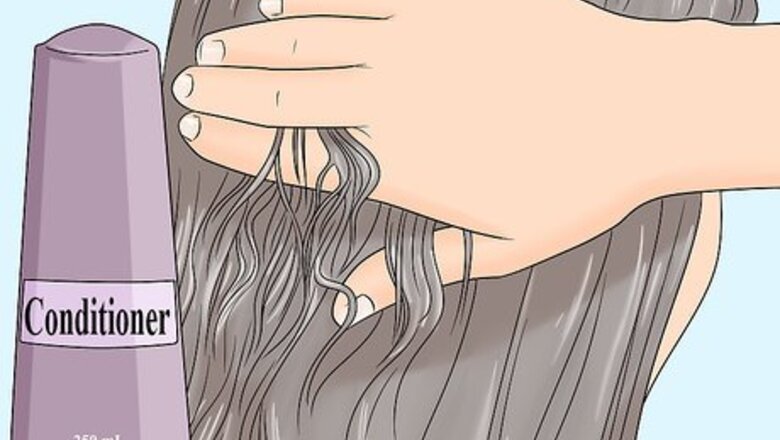
views
Adding Product
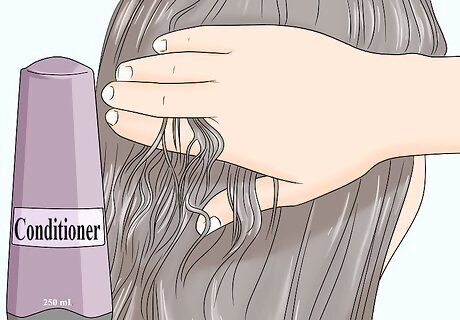
Apply a moisture-rich conditioner onto wet hair after you shampoo. While many people do not need to use conditioner every time they shampoo, you may want to if you have very thick or curly hair because it can help with tangles. Apply conditioner on the lengths of your hair—not on your scalp—and let it soak in for at least 3-5 minutes before rinsing. If your hair is very dry or tangled, apply conditioner all over your hair before getting into the shower and cover it with a shower cap. Then, leave the conditioner to soak into your hair while you shower. Rinse your hair, then shampoo and condition again the way you normally would. Unless you have very fine hair that gets oily easily, leave some of the conditioner in your hair instead of rinsing completely. The leftover product can make your hair shiny and more manageable.
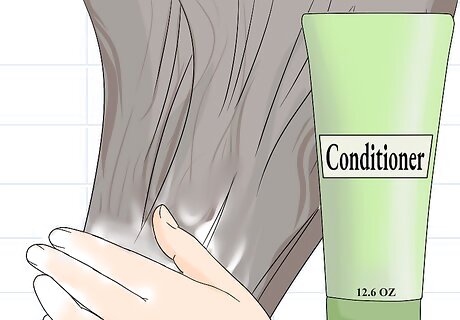
Massage a leave-in conditioner all through your hair if it is very dry or tangled. Leave-in conditioners doesn't need to be rinsed out. Instead, work the product into either wet or dry hair, then style your hair as usual. The conditioner will coat your hair, making it much easier to comb through. Leave-in conditioners are best used on thick or coarse hair. They can make thin hair look oily or dirty. Apply leave-in conditioner after you shampoo or when your hair feels dry and brittle. If your hair tends to get oily easily, you may want to choose between using leave-in or regular conditioner. However, if your hair is very dry, you can use both regular and leave-in conditioners for extra moisture and detangling.
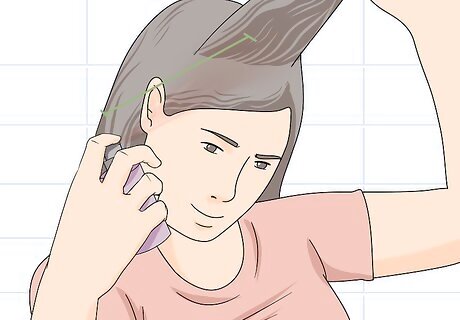
Spray on a tangle-releasing solution to loosen difficult knots on dry or wet hair. Hold the bottle of detangler about 6 in (15 cm) away from your knotted hair and spritz the tangles generously. Detangling sprays help to coat and soften your hair, which can make it easier to comb through. You can use this after your regular conditioner or whenever your hair is knotted. However, avoid using it with another leave-in product, as this can weigh your hair down and make it look oily. You can buy a detangling spray at any drugstore or beauty store, or you can make your own out of hair conditioner and olive oil.
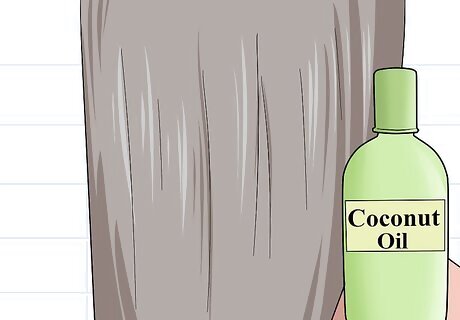
Use coconut oil as a natural and effective alternative to chemical detanglers. After you wash your hair, towel dry it until it's damp. Then, scoop up about a pea-sized dollop of coconut oil and massage it throughout your hair, focusing on the ends and any tangled areas. The coconut oil will soften your hair and make it easier to comb, which may help prevent the need for a traditional conditioner or any leave-in detanglers. Over time, coconut oil will soften and strengthen your hair. You can also use just a light coating of coconut oil on the ends of your hair as you style for a smooth finish. If the coconut oil alone isn't enough to loosen your tangles, use a traditional conditioner, then add the coconut oil after you towel-dry your hair.
Combing Out Tangles
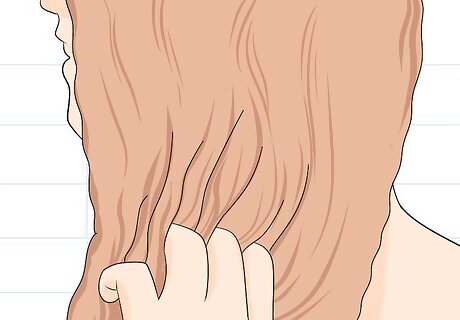
Detangle your hair with your fingers before using a comb. Try to work some of the large knots out of your hair by gently pulling them apart with your fingers. This will reduce the severity of the knots and alleviate some of the pain you might feel when trying to run a comb through it. Detangling with your fingers is a great way to start because you can really control how much pressure and pulling you do with your hands.
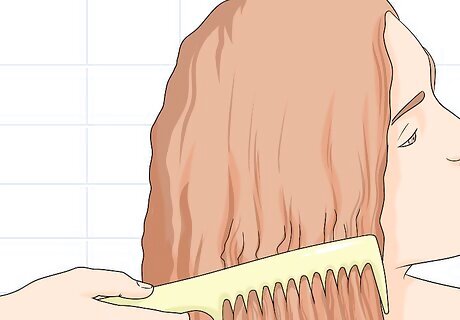
Comb out thick and curly hair while it is wet. If you need to detangle curly hair, either comb it when you get out of the shower or spritz it with water to dampen it before you start combing. Thick, curly hair is much easier to work with when it is wet because the water allows the comb to glide more easily over the hair. Wet hair is especially prone to breaking when you comb it, so go slow and use a wide-toothed comb to reduce the damage.
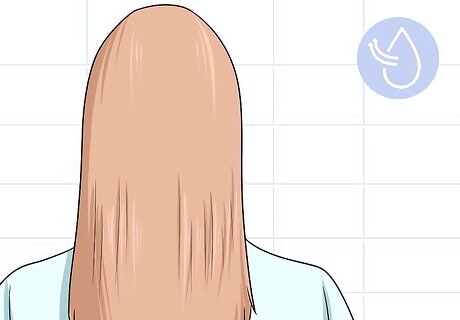
Allow straight, fine hair to air dry for a few minutes before combing it. If your hair is straight or fine, it’s best to work out tangles after it has dried a bit to prevent damage and breakage. Wait until it is no longer dripping wet, but still damp to the touch and get to work on those tangles.
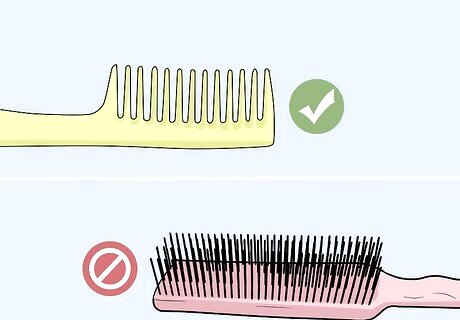
Use the proper comb to reduce pain and hair damage. The best thing to use to detangle hair is a wide-toothed comb. Many brushes and narrow-toothed combs will cause more hair breakage, more pulling, and significantly more pain. You can also use a brush that has very widely-spaced and stiff bristles. Flexible and narrowly-spaced bristles will get caught hair and also make it frizzy.
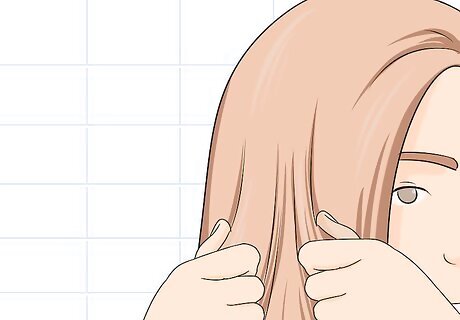
Separate your hair into small sections as you detangle it. To work knots out of hair with the least amount of pain, you want to work in the smallest sections possible. Rather than trying to force a comb through a large chunk of your hair, separate the hair into 2 in (5.1 cm) sections as you work. You don’t need to secure your hair with ties or clips into separate sections, just hold one small section at a time as you work through it. When you're finished, release that section and grab the next.
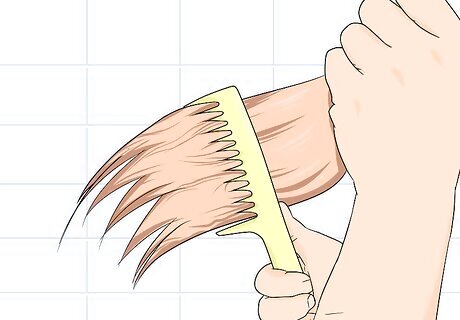
Work tangles out of your hair from the bottom up. Start by combing the very bottom 1–2 in (2.5–5.1 cm) of your hair. Once that's detangled, move your comb or brush up and comb the 1–2 in (2.5–5.1 cm) above that. When you comb your hair this way, you can work through one knot at a time. If you begin at the scalp, each section may have two or three knots and you will just push one down into the next, creating a potentially bigger mess.
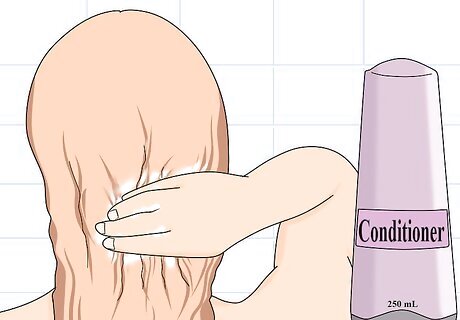
Saturate really difficult knots with a detangling product. If you can't comb through the knot, go ahead and reapply conditioner or your detangling product of choice. Don't worry about using too much—you can always wash out the excess after you've removed the knot.


















Comments
0 comment